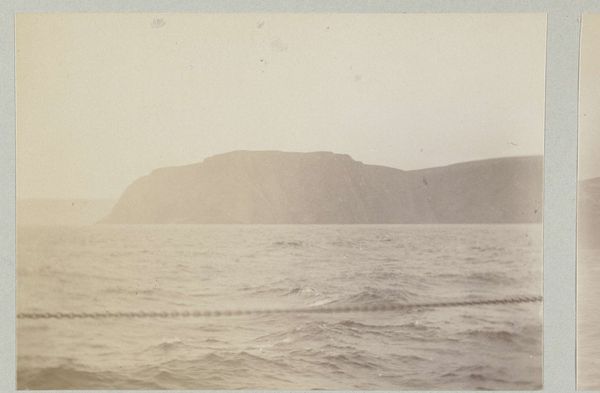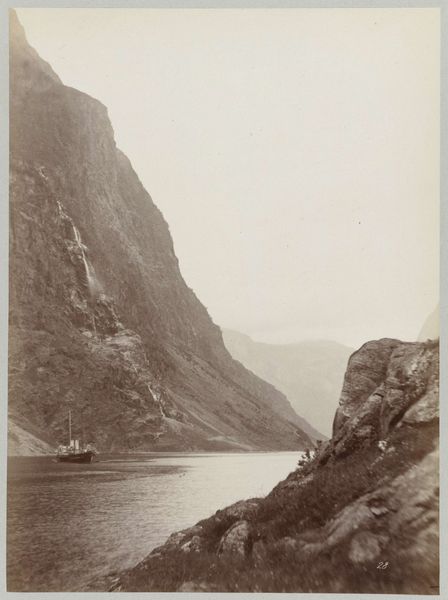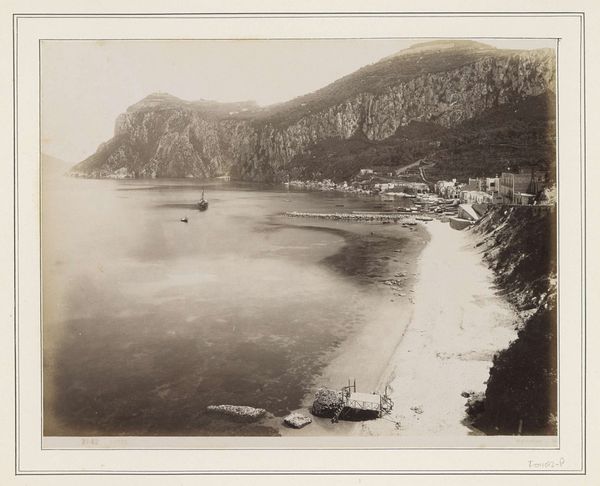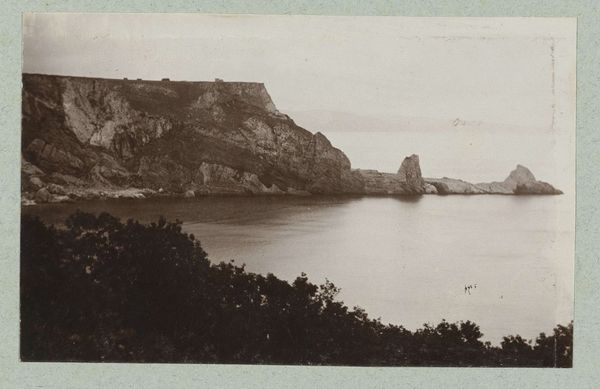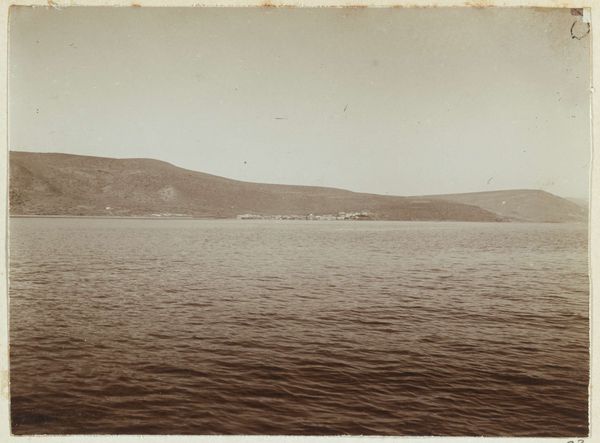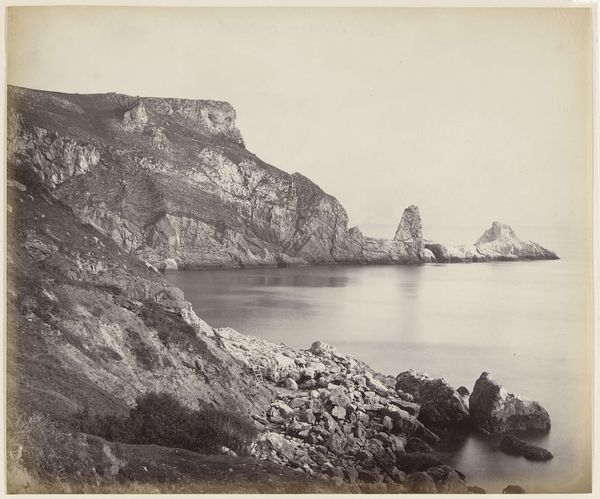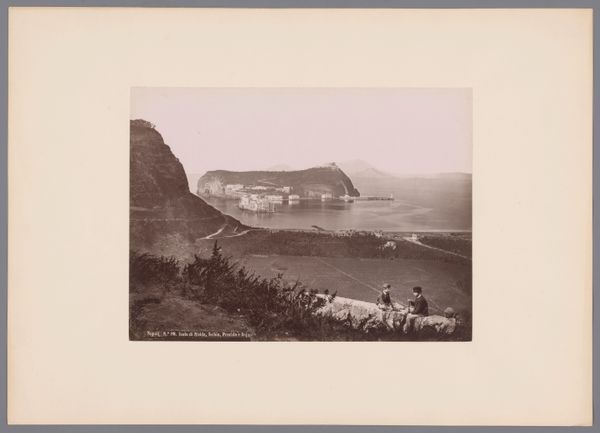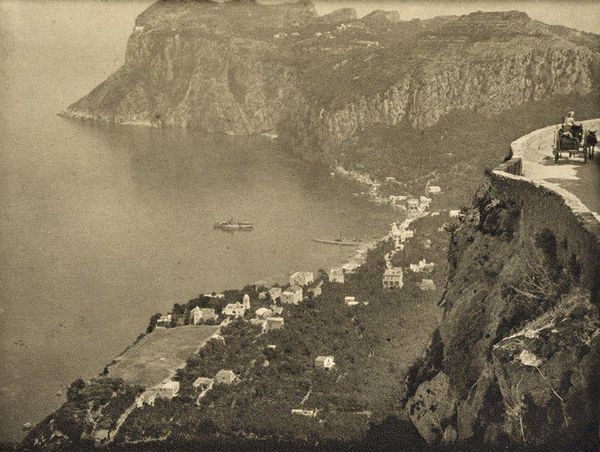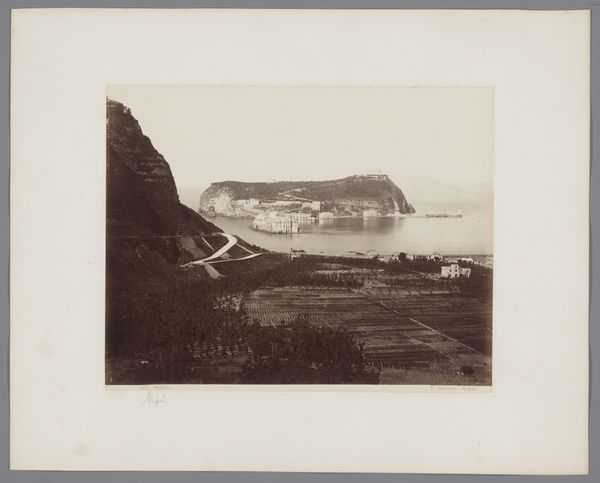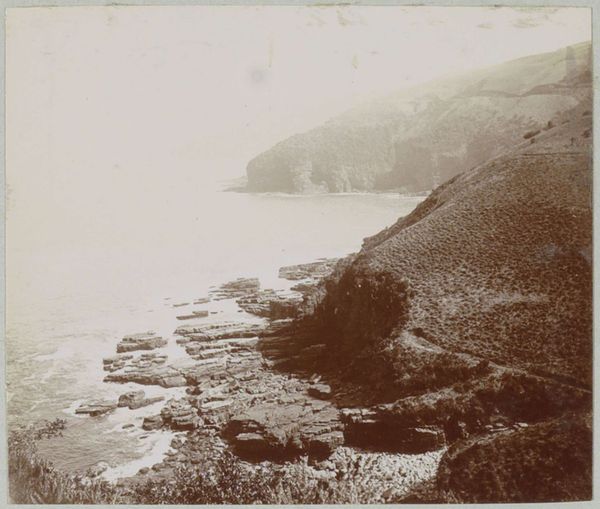
Dimensions: height 168 mm, width 230 mm, height 198 mm, width 229 mm
Copyright: Rijks Museum: Open Domain
Curator: Here we have a photograph from 1896 by Henry Pauw van Wieldrecht. It’s titled "Klif uitlopend in zee (fjord in Noorwegen?)" which translates to "Cliff extending into the sea (fjord in Norway?)". Editor: A striking first impression. It is predominantly monochrome with these large, looming cliff edges contrasted against the open water; rather imposing, isn't it? Curator: Indeed. Van Wieldrecht was part of a Dutch artistic photography movement called pictorialism, and this piece is a testament to its values. It presents photography as a handcraft, an artistic endeavor beyond mere representation, as it emulates painting techniques and principles, blurring photography into fine art. Editor: Yes, there is a painterly quality to it. I notice how the light interacts with the rugged texture of the cliff face. Notice too, how he manipulates tonal range in the image—almost like using a charcoal. And what's that strange rock column standing out at the fjord’s furthermost point? Curator: I read that artists deploying the pictorialist style aimed to convey emotion through soft focus and manipulation of the photographic print; think soft focus filters, printing on textured paper, and hand-applied chemical treatments to add texture and modify contrast, pushing back against mechanical production by engaging in hand processes, like etching or gum printing to change their imagery to emulate the look of impressionist painting. Editor: Which moves us from a study of nature to an artful mediation. And considering it, there’s something subtly dramatic in its formal elements; the somber colors, the balance between the mass of the land and the emptiness of the sea...a stark reminder of humanity’s relationship with the natural world. I'm curious though as to why this artwork appears to lack details, and in parts, appears blurred. Curator: This very quality, the use of soft focus, gives his photo a timeless or romantic atmosphere. What appears now as blurring to our eye was in his time intended to set up this artwork’s quality, meaning that such "flaws" are what gave photos this pictorialist allure. Editor: That definitely encourages a second look, an understanding that photography isn't always about pure clarity, but sometimes atmosphere, form, and that emotional resonance it was made to create. Curator: Precisely, which highlights the historical conditions for understanding what it is that we're seeing when faced with this photography; that, although understated, has much to reveal about what its cultural work has done. Editor: I will surely consider this during the next landscape picture I see.
Comments
No comments
Be the first to comment and join the conversation on the ultimate creative platform.
